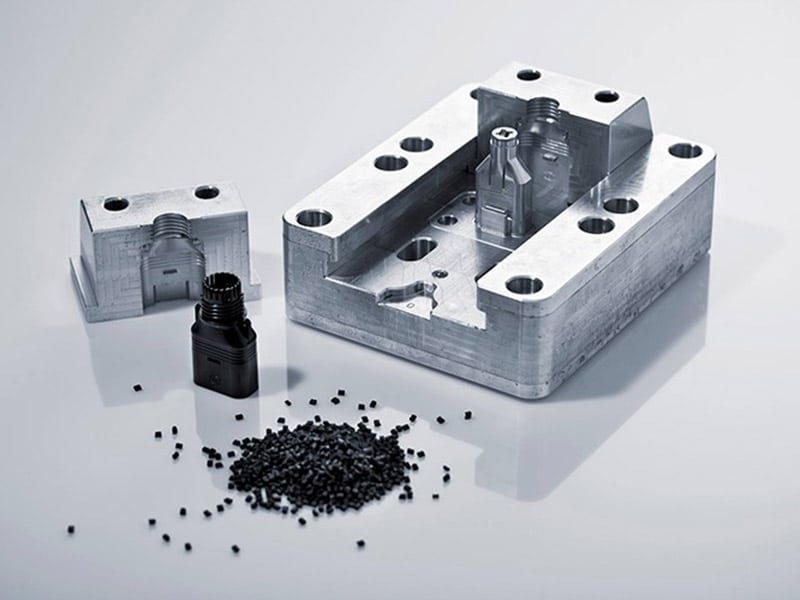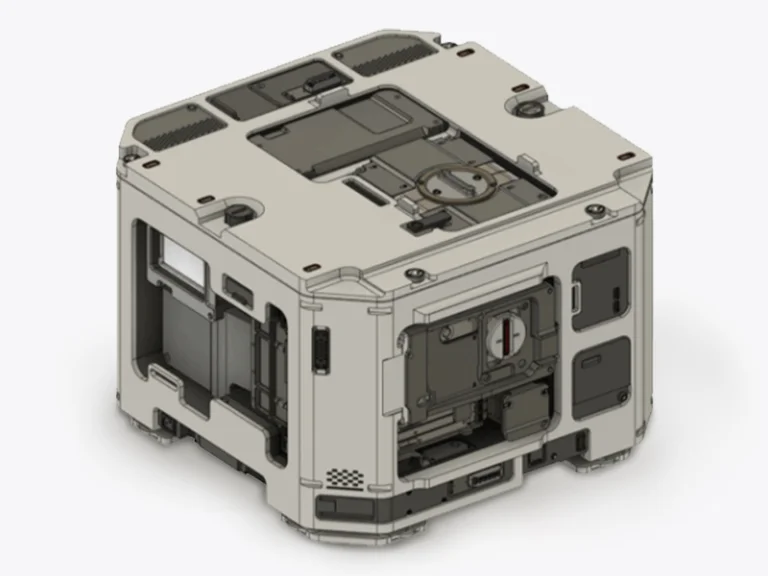Rubber compression molding is a widely used manufacturing process for shaping rubber into precise, durable components for various industries. This method involves applying heat and pressure to rubber material inside a mold to create parts with consistent quality and tight tolerances. From selecting the right rubber molding machine to understanding the nuances of the compression molding process, this article explores rubber compression molding advantages and disadvantages, compression molding and injection molding comparison, etc. Whether you’re looking to improve efficiency, reduce defects, or choose the best equipment for your operation, the following insights will guide you through the essentials of rubber compression molding.
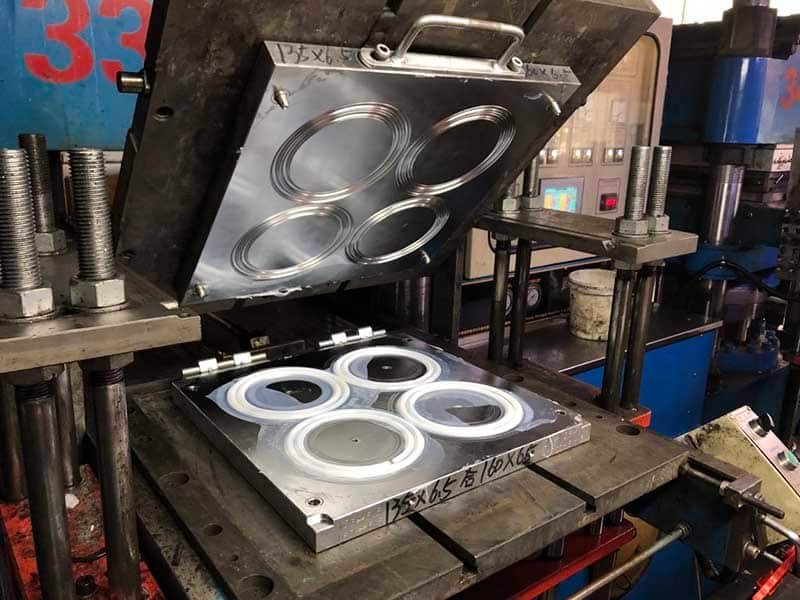
What is Rubber Compression Molding?
Rubber compression molding is a widely used manufacturing process for shaping rubber parts. It involves placing a rubber compound in a heated mold cavity, which is then compressed under high pressure to form the desired shape. This process is especially well-suited for producing simple and complex rubber components with high precision, making it a go-to solution for a variety of industries. The rubber molding machine and mold design are integral to ensuring the final product meets the required specifications. Rubber compression molding stands out as an economical and versatile method, making it a staple for many manufacturers of rubber products.
The Rubber Compression Molding Process
The rubber compression molding process begins with the preparation of raw rubber material, often in the form of pre-formed shapes such as rubber biscuits, slabs, or sheets. These pieces are then placed into a mold cavity, which is precisely designed to accommodate the specific part shape.
The next step involves closing the mold and applying heat and pressure to the rubber material. The heat helps the rubber compound cure or vulcanize, while the pressure ensures the material fills the mold cavity completely, forming a high-quality part. The duration of this process depends on factors such as part size, material properties, and mold design.
Once the curing time is complete, the mold is opened, and the finished rubber component is ejected. In many cases, the part will require trimming to remove any excess material, often referred to as flash, that has escaped from the mold during compression.
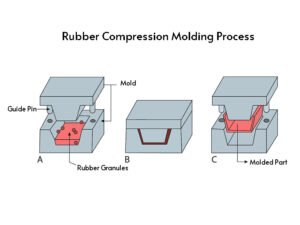
Key Tools and Equipment in Rubber Compression Molding
Rubber compression molding relies heavily on specialized tools and equipment to ensure consistent and efficient production. The key components of the rubber compression molding process include:
Rubber Molding Machine
The rubber molding machine is the central piece of equipment in the compression molding process. It consists of a press that applies the necessary pressure to the mold. These machines are designed to withstand high temperatures and force while providing the precision required for producing high-quality rubber components.
Molds and Tooling
Mold design plays a crucial role in the compression molding process. The molds are usually made from steel or aluminum and are custom-designed to create the desired shape of the rubber part. Tooling includes the components that assist in the molding process, such as inserts, inserts for vents, and heating elements that ensure uniform temperature distribution.
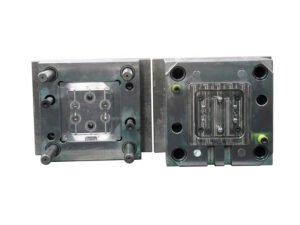
Heating Elements
The application of heat is essential in curing the rubber. Typically, heating elements are embedded in the mold to ensure that the rubber material undergoes proper vulcanization, a chemical reaction that causes the rubber to become stronger, more durable, and heat-resistant.
How to Choose the Right Rubber Compression Molding Machine?
When choosing the right rubber compression molding machine, it’s essential to evaluate your production needs and the machine’s capabilities to ensure optimal performance.
- Start by considering the type and volume of parts you plan to produce, as well as the required production speed. The machine should provide sufficient compression force to handle the size and thickness of your molds, while also maintaining consistent heating and temperature control for effective curing. Ensure that the machine is compatible with your mold dimensions and design, including cavity count and opening stroke.
- Additionally, assess whether you need advanced automation features like automatic mold changing or robotic handling to streamline production and reduce labor costs.Equally important is the machine’s quality, energy efficiency, and after-sales support. Opt for a durable machine from a reputable manufacturer, as this will reduce maintenance costs and ensure reliable long-term operation. Look for energy-efficient technologies, such as advanced heating systems or variable frequency drives, to minimize operational expenses.
- Lastly, prioritize manufacturers that offer strong after-sales support, including warranties, spare parts availability, and responsive customer service. By carefully balancing these factors, you can select a rubber compression molding machine that meets your production requirements while maximizing efficiency and product quality.
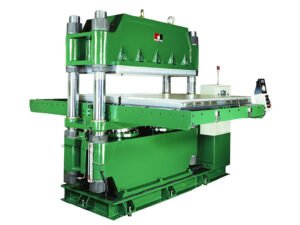
Compression Mold Design Considerations
When designing a mold for rubber compression molding, several factors must be taken into account to ensure both efficiency and high-quality output. Key considerations include:
Part Complexity
Complex parts may require molds with intricate details and specialized components, such as inserts or cores. The complexity of the design will affect not only the mold’s structure but also the time and pressure needed during the compression molding process.
Material Flow
Ensuring that the rubber material flows smoothly throughout the mold is critical to achieving uniform part thickness and avoiding defects like air pockets or insufficient material distribution. A well-designed mold includes features that help manage material flow and reduce resistance during the compression process.
Venting
Proper venting is crucial for the successful molding of rubber components. Venting channels in the mold allow air to escape as the rubber material is compressed, preventing air bubbles from forming in the final part and ensuring a clean, defect-free product.
Curing Time
The time required for curing depends on the thickness and type of rubber material used. The mold should be designed with this in mind to ensure optimal heat transfer and the correct vulcanization time.
Materials Selection
Different rubber materials offer varying properties, including elasticity, heat resistance, and chemical stability. Some common rubber materials used in compression molding include:
- Natural Rubber: Known for its excellent resilience and flexibility.
- Silicone Rubber: Offers high-temperature resistance and is ideal for medical or food-grade applications.
- Nitrile Rubber: Highly resistant to oils, fuels, and chemicals.
- EPDM Rubber: Ideal for outdoor and automotive applications due to its weather and ozone resistance.
Selecting the appropriate rubber materials based on the part’s intended application, environmental conditions, and performance requirements ensures that the finished product meets the necessary standards.
Advantages of Rubber Compression Molding
Rubber compression molding is a widely used manufacturing process that offers several advantages, making it a preferred choice for producing rubber parts. Here are the key benefits:
Cost-Effectiveness
- Lower Tooling Costs: Compression molding typically requires less expensive tooling compared to methods like injection molding. The absence of complex machinery and infrastructure reduces initial capital investment significantly.
- Ideal for Small Production Runs: This method is particularly suitable for small production volumes, allowing manufacturers to produce parts without incurring high setup costs.
Production Efficiency
- Simplicity of the Process: The compression molding process is straightforward, making it easier for operators to manage. This simplicity can lead to lower overall production costs and reduced training time for staff.
- No Runners, Gates or Sprues: Unlike injection molding, compression molding does not require runners or gates, which minimizes material waste and simplifies the manufacturing process.
Versatility
- Suitable for Larger Parts: Compression molding excels in producing larger components, as it allows for direct loading of material into the mold without weight restrictions. This contrasts with injection molding, where part size can be limited by barrel capacity.
- Adaptability to Various Materials: The process can accommodate a wide range of elastomers, including natural rubber and synthetic materials, enhancing its versatility in manufacturing different types of rubber products.
Quality and Performance
- Strong and Durable Products: The combination of heat and pressure during the molding process results in strong, durable parts that can withstand significant stress and usage.
- Good Tolerances: While not as precise as injection molding, compression molding can still achieve satisfactory dimensional tolerances for many applications, especially when producing thicker parts.
Challenges in Rubber Compression Molding
Despite its advantages, rubber compression molding presents certain challenges that manufacturers must address:
Mold Maintenance
Molds used in rubber compression molding are subject to wear and tear due to the repeated high-pressure cycles. Regular maintenance and reworking of the mold are necessary to maintain precision and avoid defects in the final product.
Long Cycle Times
The curing process in compression molding can take longer than other molding processes, such as injection molding. This extended cycle time may limit production rates, particularly for high-volume orders.
Flashing and Defects
While rubber compression molding is relatively simple, issues like flashing (excess rubber) and inconsistent curing can affect the final part quality. These issues can often be mitigated with proper mold design, but they remain a consideration in the process.
Applications of Rubber Compression Molding
Rubber compression molding is used across a diverse array of industries. Some common rubber molding components include:
- Automotive: Rubber gaskets, seals, bushings, and vibration-damping components.
- Medical: Rubber seals and components for medical devices, such as gaskets and O-rings.
- Industrial: Custom rubber parts used in machinery and equipment, including vibration isolation components and grommets.
- Consumer Goods: Rubber components for electronics, toys, and household items.
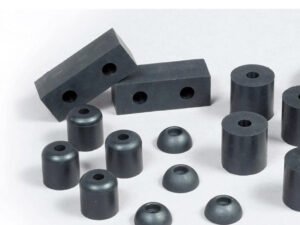
Rubber Compression Molding vs Rubber Injection Molding
When comparing rubber compression molding to rubber injection molding, there are several key differences to consider.
- Tooling and Mold Design: Compression molding often requires simpler molds and less sophisticated tooling compared to injection molding, which uses more intricate molds and advanced machinery.
- Cycle Time: Injection molding generally offers faster cycle times compared to compression molding, making it ideal for high-volume production of complex parts.
- Material Waste: Injection molding tends to generate more material waste, as excess rubber is often removed during the molding process. Compression molding, however, allows for more efficient material usage.
- Cost: Rubber compression molding typically involves lower upfront costs for tooling and machinery, making it a cost-effective solution for smaller to medium-sized production runs.
| Feature | Compression Molding | Injection Molding |
|---|---|---|
| Tooling Cost | Lower | Higher |
| Ideal Part Size | Larger parts | Smaller parts |
| Cycle Time | Longer (1-6 minutes) | Shorter |
| Precision | Moderate | High |
| Material Waste | Less (no runners/gates) | Minimal |
| Labor Costs | Higher (manual trimming) | Lower (more automated) |
| Production Volume Suitability | Small to medium runs | High-volume production |
Conclusion
Rubber compression molding continues to be a preferred choice for manufacturers producing custom rubber components across a variety of industries. Its cost-effectiveness, versatility, and ability to handle complex part designs make it an invaluable process. By understanding the rubber compression molding process, key considerations in mold design, and the material selection process, manufacturers can optimize production, reduce defects, and create high-quality rubber components that meet stringent industry standards.

